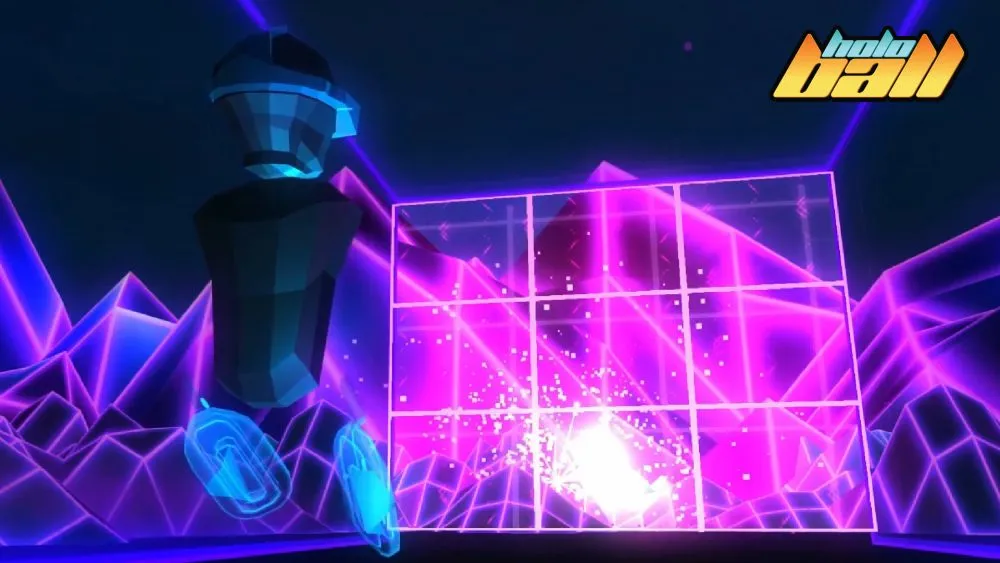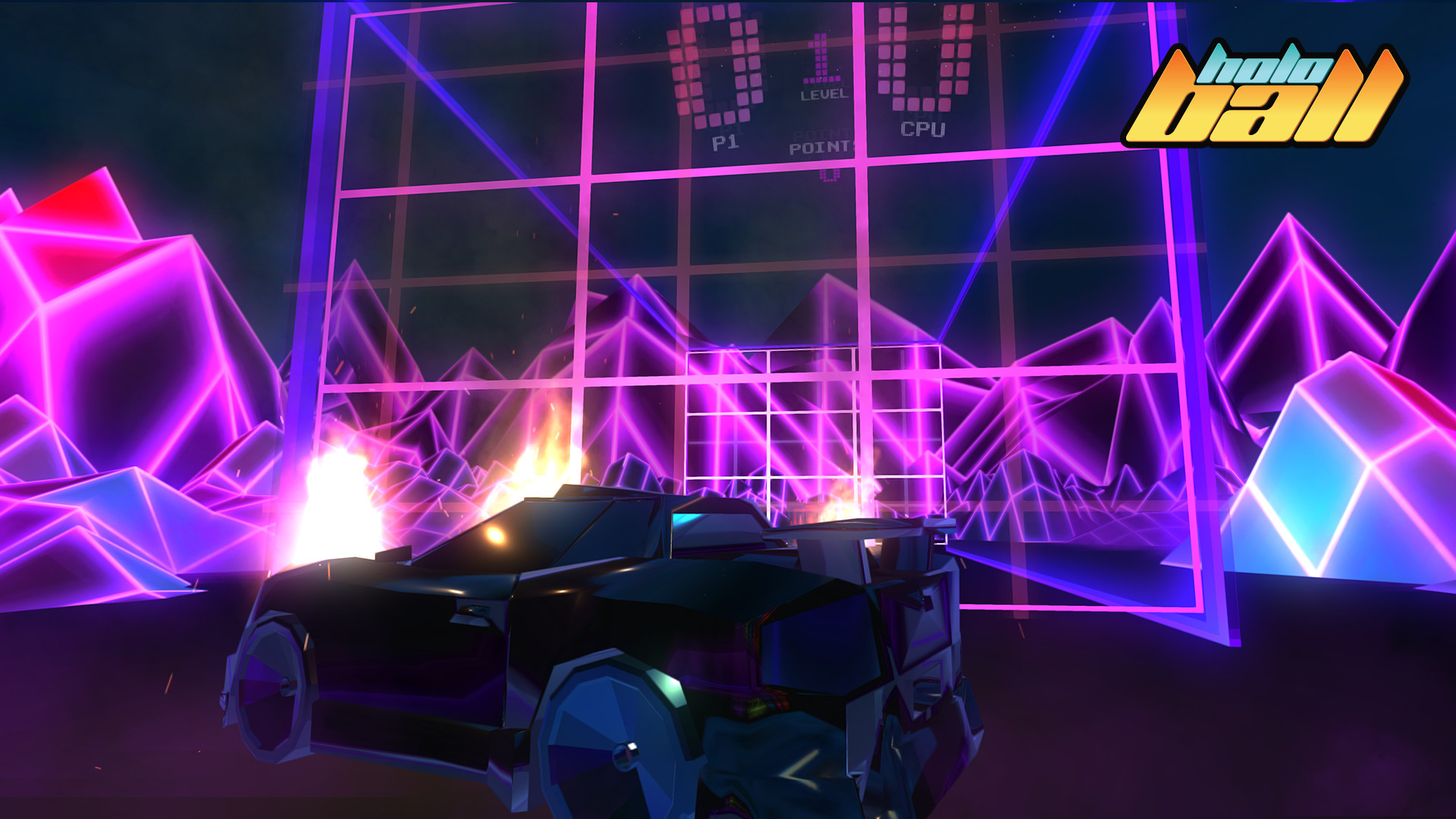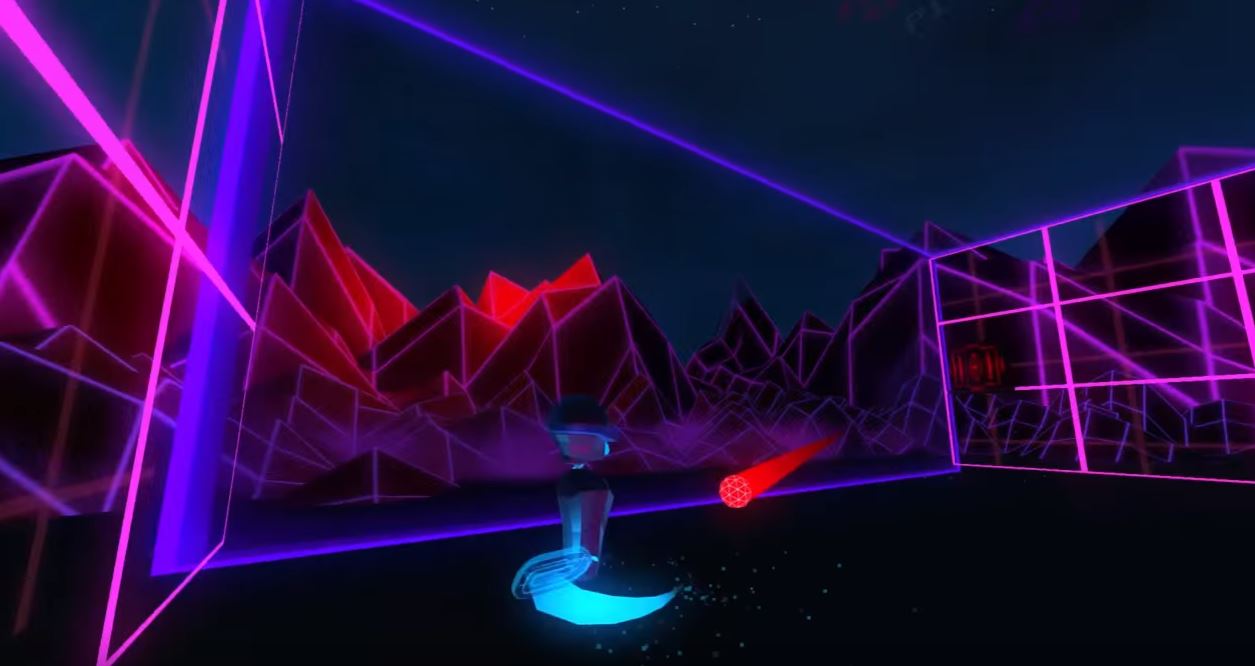The first time I played HoloBall was like a revelation. It’s a dead simple concept: swing your paddles at a ball and knock it back and forth between yourself and an A.I. opponent. The game adapts to your play space, meaning the more room you have, the more space you have to defend. It gets you up and moving and transforms an otherwise simple game of Pong into a workout that feels like a cross between racquetball and tennis.
HoloBall was the first game to ever make me sweat in VR and hours later, I still go back for more. It originally launched all the way back on the HTC Vive earlier this year, enjoyed a lot of success, and is now also available on the PlayStation VR, with an Oculus Touch version hitting next week with the launch of the Rift motion controllers. For this review, I’m referencing my time with the Vive and PS VR versions, but it should be a direct port either way.
Everything in HoloBall evokes a very classic, 80s, retro-futuristic vibe, similar to Tron and countless other sci-fi movies and games. The A.I. enemy does a bit of trash talking in a cybernetic voice to help get you amped up even more, which makes each time you score even more satisfying.
Similar to Dangerball that’s found within the PlayStation VR Worlds package, HoloBall is all about knocking a virtual ball back and forth with an imaginary opponent. You’ll definitely need a large enough play space for this one because you’ll often lunge and stretch out in either direction to get the tricky corner shots to defend your sweet ride, shown below. On harder difficulties, it gets extremely intense.
The core game starts with just the most basic difficulty unlocked, which you must complete to unlock further modes. The team at TreeFortress Games continues to update it, as recently as less than a month ago, and will be adding multiplayer support very soon after the upcoming beta. Currently, multiplayer is offered asynchronously on the same system, as one person can control the A.I. paddle remotely — but it’s not the same as VR-versus-VR multiplayer online.
Above all else though is the fact that the physics and haptics feel wonderful. The controllers vibrate with a satisfying buzz each time you connect with the ball and the accuracy of where the ball goes and bounces lends itself well to building strategies and specifically aiming for certain areas of your enemy. You’ll need a few feet on either side of you to make sure you don’t violently slam your hand into anything — and wrist straps are a must.
Not every VR game needs to be or should be an immensely innovative take on the medium. Sometimes it’s just enough to be polished, simple, and fun. That’s exactly what HoloBall is. You put a controller in someone’s hand, tell them it’s like playing tennis, and let them get into the experience. There are no real controls to learn other than knowing how to move from side-to-side using your actual legs and swinging a paddle with enough conviction to lop off someone’s head.
HoloBall is currently available for HTC Vive on Steam and the PlayStation Network Store for PS VR — both for $14.99. It will also be available on Oculus Home for Oculus Rift with Touch starting December 6th. Read our Game Review Guidelines for more information on how we arrived at this score.




























